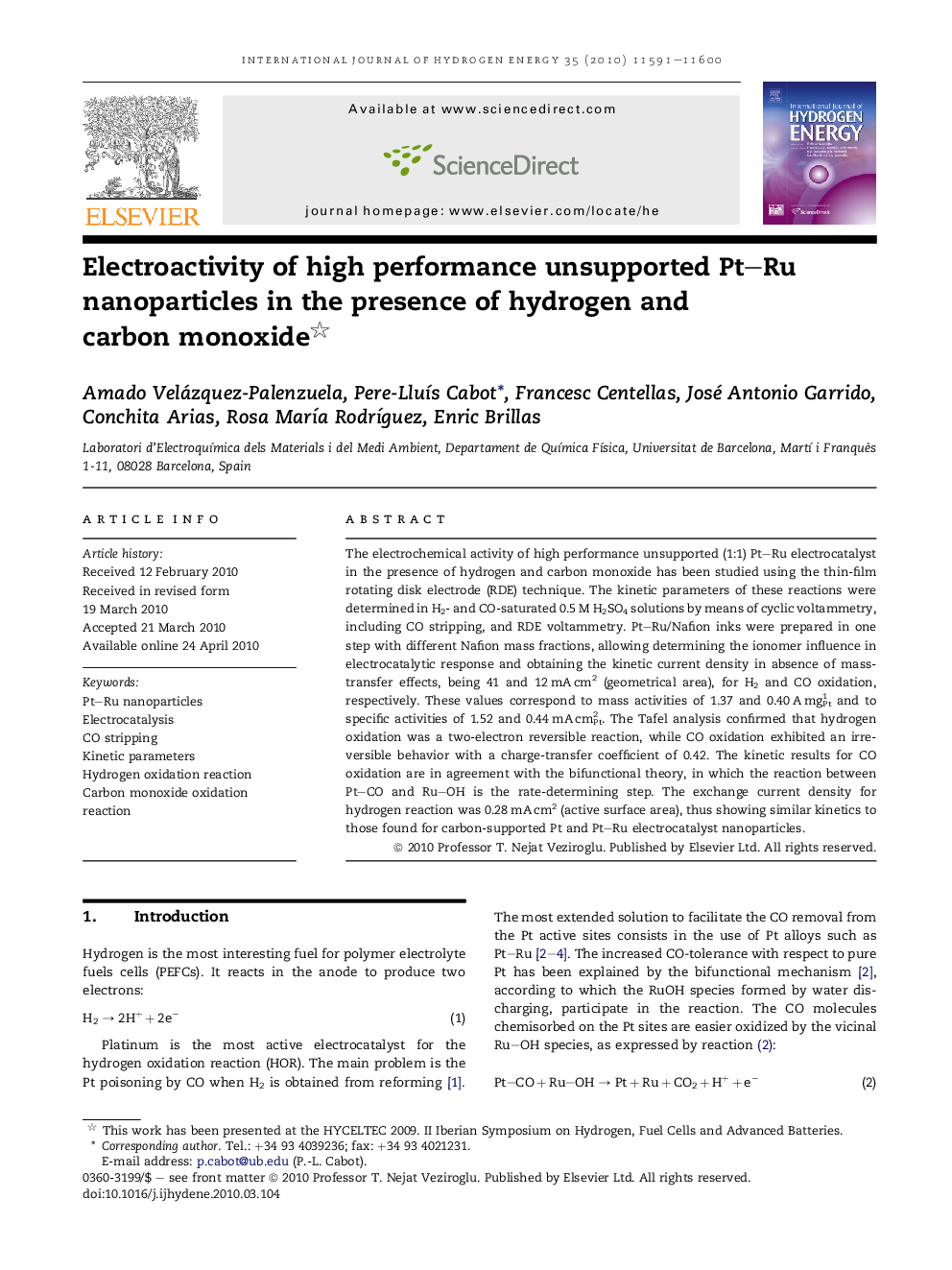| Article ID | Journal | Published Year | Pages | File Type |
|---|---|---|---|---|
| 1276762 | International Journal of Hydrogen Energy | 2010 | 10 Pages |
The electrochemical activity of high performance unsupported (1:1) Pt–Ru electrocatalyst in the presence of hydrogen and carbon monoxide has been studied using the thin-film rotating disk electrode (RDE) technique. The kinetic parameters of these reactions were determined in H2- and CO-saturated 0.5 M H2SO4 solutions by means of cyclic voltammetry, including CO stripping, and RDE voltammetry. Pt–Ru/Nafion inks were prepared in one step with different Nafion mass fractions, allowing determining the ionomer influence in electrocatalytic response and obtaining the kinetic current density in absence of mass-transfer effects, being 41 and 12 mA cm2 (geometrical area), for H2 and CO oxidation, respectively. These values correspond to mass activities of 1.37 and 0.40 A mgPt1 and to specific activities of 1.52 and 0.44 mA cmPt2. The Tafel analysis confirmed that hydrogen oxidation was a two-electron reversible reaction, while CO oxidation exhibited an irreversible behavior with a charge-transfer coefficient of 0.42. The kinetic results for CO oxidation are in agreement with the bifunctional theory, in which the reaction between Pt–CO and Ru–OH is the rate-determining step. The exchange current density for hydrogen reaction was 0.28 mA cm2 (active surface area), thus showing similar kinetics to those found for carbon-supported Pt and Pt–Ru electrocatalyst nanoparticles.
